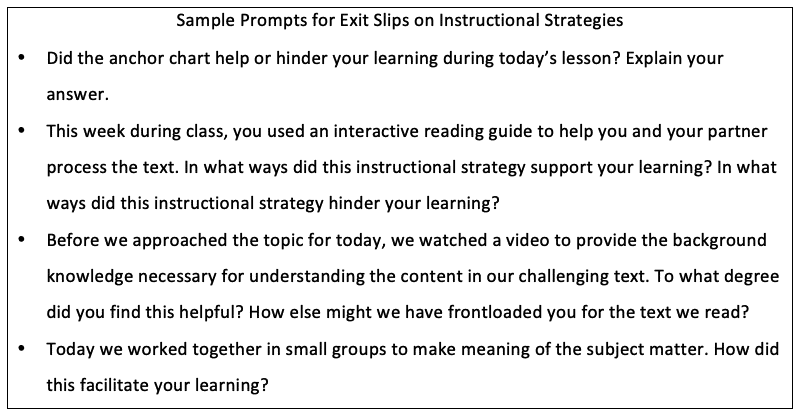Table of Contents
Formative assessments, which are typically informal, take place throughout the instructional process. They should be administered frequently since they provide an immediate assessment of students’ levels of mastery. However, it is important to provide creative ways for students to demonstrate their knowledge. Let’s look at 4 formative assessments that can be used before, during, and after instruction.
Before Instruction
1.) Anticipation Guides
Anticipation guides can be used to activate prior knowledge of your students, but they also allow insight into student thinking prior to a new text or topic. For example, students in a physics class can provide information as to their understanding related to atomic physics, or they can “show what they know” related to quadratic formulas in algebra. In a social studies classroom, this can be used with information about a particular place, such as a country or state, and it is a useful tool for pre-reading in a language arts classroom.

During Instruction
2.) Four Corners
You can incorporate movement into your lesson by playing an academic version of Four Corners. When reviewing a multiple-choice test in math, you may ask students to go to Corner 1 if they chose A, Corner 2 if they chose B, Corner 3 if they chose C, or Corner 4 if they chose D. Discuss the answers, and students may then move corners, as long as they have a rationale for their decision based on textual evidence. Similarly, you could use Four Corners to review information. After teaching about solar power, you could assign students at random to one of four corners to collaborate with new group members: Corner 1—effects on atmosphere; Corner 2—effects on jobs gained; Corner 3—effects on jobs lost; and Corner 4—effects on the overall economy. These groups share out, at which point you can address any major points that have been missed and correct any misunderstandings.
3.) Graffiti Wall
Students can collect significant quotes from historical figures or thematic concepts in reading by writing them on the wall! Simply take bulletin board paper and hang it on a section of your classroom or hallway walls and allow them to begin splashing their thoughts onto it. Your purpose could vary greatly depending on content and objective but allowing a space for students to think out loud in a visual manner stimulates other students’ thoughts as well as provides an insider’s view for the teacher.
After the Lesson
4.) Stimulate Students’ Self-Awareness
In exit slips, students judge how well they understand the content. However, it’s important to move beyond “What did you learn?” and “What question do you have?” For example, you might ask students to rank themselves on a scale of 1 to 4: 4—I can teach this to another student; 3—I feel comfortable working on my own but may need to use another resource to help me; 2—I understand somewhat but need a different explanation; 1—clue-ess.
Another option is to use A Bump in the Road. With a bump in the road, students reflect on their learning and identify two to four points where they hit bumps in the road, or struggles. Then they partner with another student to see if they can work their way through their struggle.
You can also focus on how students learn. When you use an exit slip in this manner, it gives students an opportunity to provide feedback on the effectiveness of specific instructional strategies used to support their learning. This type of exit strategy is best implemented weekly.

No matter what type of exit slip you are using, you’ll want to find a way to manage the information. With today’s technology, there are a variety of ways to collect exit slip information from your students. With any mobile device, students can access a digital platform and immediately push answers out to the teacher, who then has the ability to display the class’s thinking as a whole on the screen or choose a select few to further discuss.
A Final Note
It’s important for us to know as much as possible about what and how students learn, and this needs to occur on a continual basis. Effective formative assessment strategies can help us understand not only where students are in their learning, but how we can help them move forward.
- EdWeek – Why We Need Transformative Learning Experiences
- EdWeek – Q&A Collections: Student Assessment
- The Wall Street Journal – Many More Students, Especially the Affluent, Get Extra Time to Take the SAT




